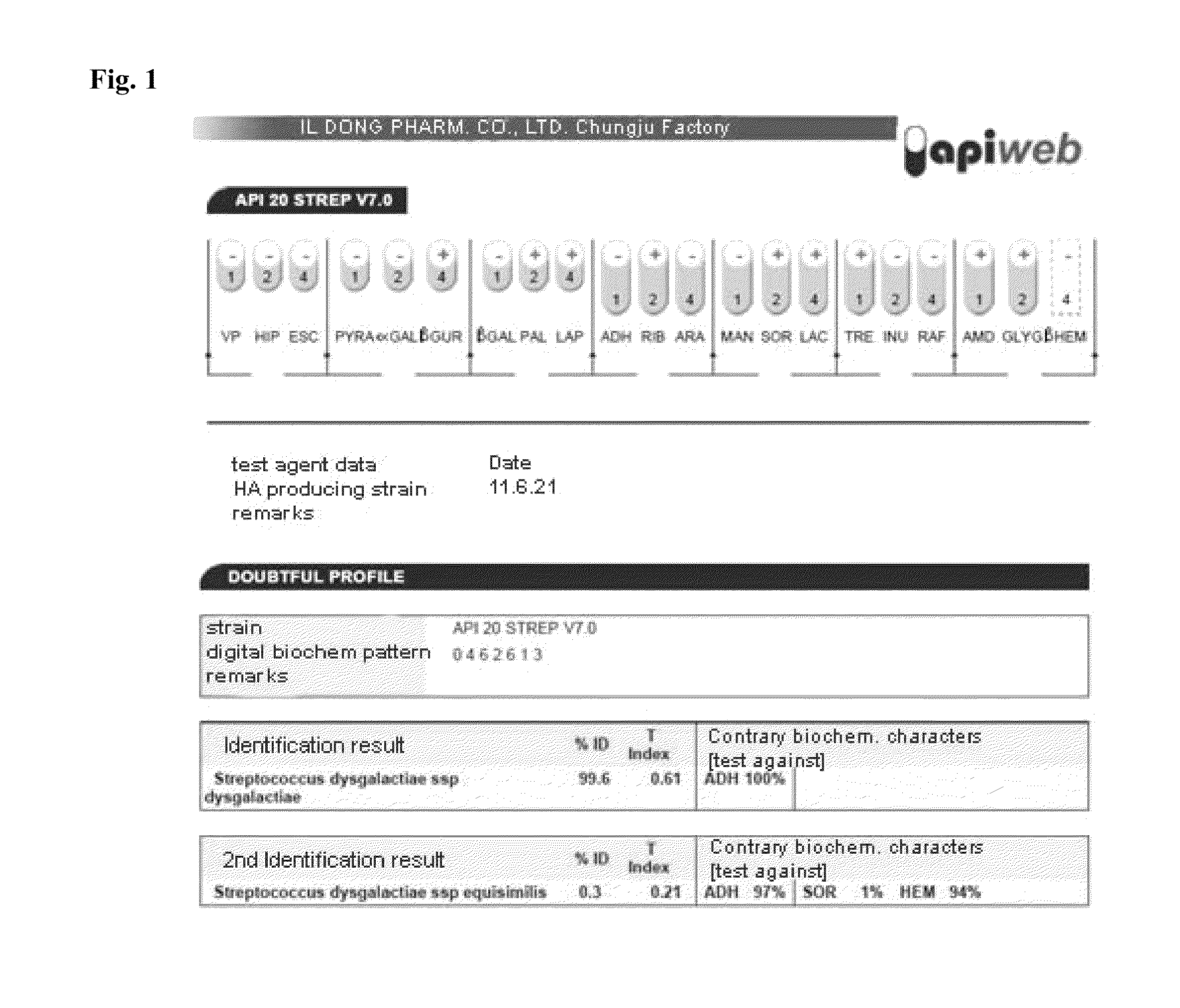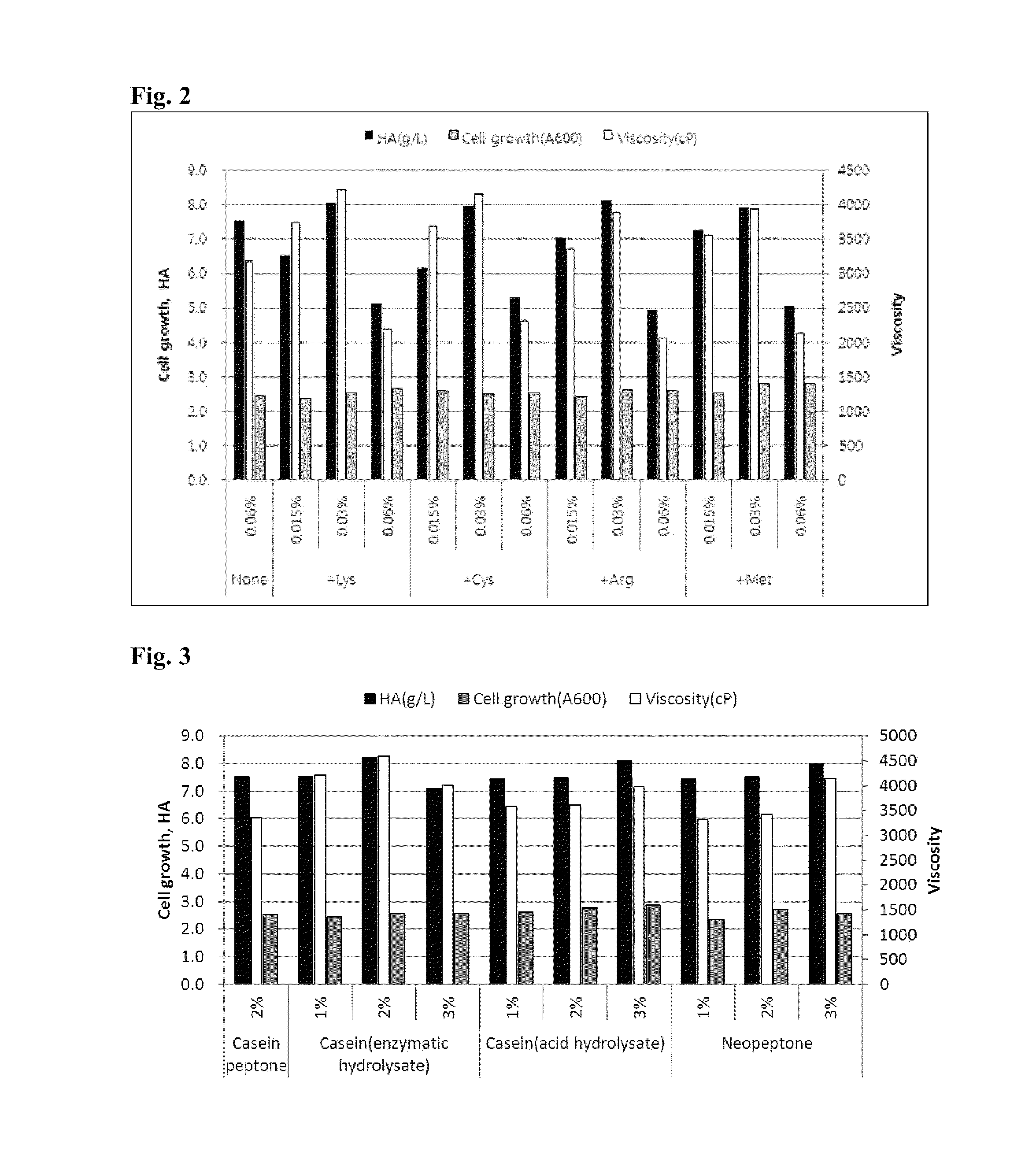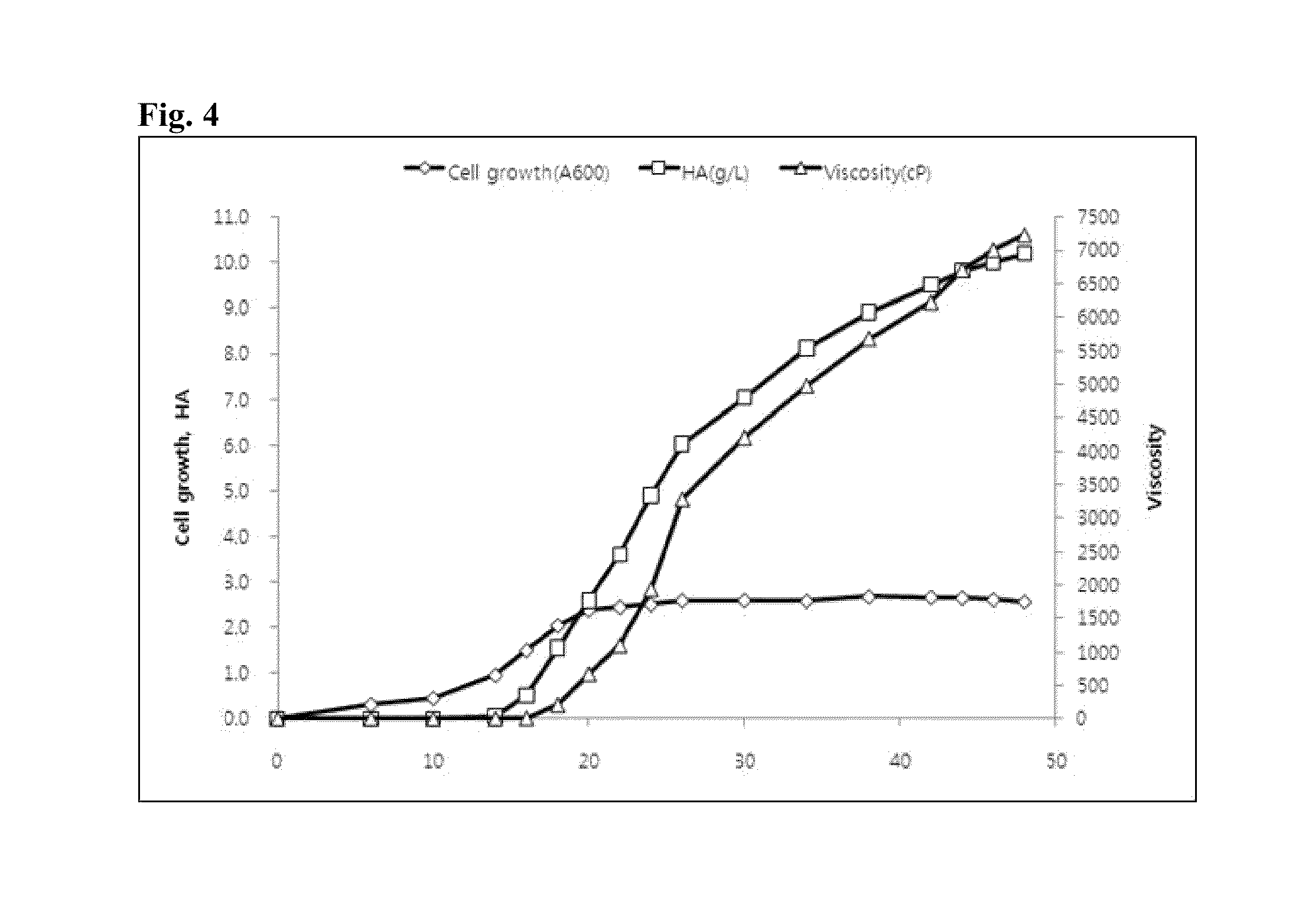Streptococcus dysgalactiae ID9103 and method for production of hyaluronic acid using the same
a technology of streptococcus and hyaluronic acid, which is applied in the field of hyaluronic acid production method and production method, can solve the problems of difficult industrial use of this technology in actuality, insufficient economic efficiency, and low efficiency of hyaluronic acid development, etc., to achieve high viscosity, and high hyaluronic acid production capacity
- Summary
- Abstract
- Description
- Claims
- Application Information
AI Technical Summary
Benefits of technology
Problems solved by technology
Method used
Image
Examples
example 1
Selection of Streptococcus dysgalactiae ID9103
[0059] Securing of Strain of Genus Streptococcus Producing Hyaluronic Acid
[0060]Genus streptococcus producing hyaluronic acid (HA) is well grown in a brain heart infusion medium (Calf brains, infusion 0.77%, beef hearts, infusion 0.98%, proteose peptone 1%, dextrose 0.2%, NaCl 0.5%, Disodium phosphate 0.25%; BD, US), and in single colony separation, it can produce hyaluronic acid, thereby forming more smooth and viscous colonies than general colonies.
[0061]About 500 samples collected from 10 stables of the whole country were diluted in such a manner that about 200 colonies can be grown per solid medium, and smeared on 3.7% brain heart infusion solid medium. Then, with the naked eye, colonies that were found to produce a viscous substance were selected.
[0062]In order to morphologically observe separated strains, they were smeared on a brain heart infusion solid medium so as to separate colonies, and cultured in a 37° C. culture medium. Wh...
example 2
Basic Culturing Condition Test on Production of High Molecular Weight Hyaluronic Acid, and Production Amount Comparison Test
[0077] Basic Culturing Condition Test
[0078]4 ml of Streptococcus dysgalactiae ID9103 strain culture solution stored in a −72° C. refrigerator was rapidly thawed, smeared on 5.2% brain heart infusion solid medium, and cultured at 37° C. for 24 hours. The grown colony was cut with an area of 1 cm2 and inoculated into 40 ml of 3% Todd-Hewitt broth sterilized liquid medium (heart, infusion 0.31%, neopeptone 2%, dextropse 0.2%, NaCl 0.2%, Disodium phosphate 0.04%, sodium carbonate 0.25%; BD, US).
[0079]40 ml of the liquid shake-cultured at 37° C. at 120 rpm was used as a primary seed culture solution. In a Logarithmic growth phase following culturing for 6 hours, the primary seed liquid was aseptically inoculated to three 3% Todd-Hewitt broth sterilized liquid media (40 ml, pH 7.8). Under the culturing condition of 37° C. and 120 rpm, after aseptic culturing for 20 h...
example 3
High Molecular Weight Hyaluronic Acid Productivity According to Adjustment of Yeast Extract Concentration
[0092]Based on the culturing condition and the medium composition determined in , the culturing was performed by varying the concentration of yeast extract. The nitrogen source is known to perform an important role in metabolism of microorganisms, and have an effect on production of hyaluronic acid. Accordingly, it was determined that the adjustment of the concentration of the yeast extract as the nitrogen source may contribute to the productivity of hyaluronic acid.
[0093]As a result, as noted in table 4, the viscosity was increased at 2% (w / v) of yeast extract, as compared to that at 0.5% (w / v) of yeast extract. Accordingly, it was determined that the increase of yeast extract concentration is suitable for producing high molecular weight hyaluronic acid. In the tests of following Examples, the concentration of the yeast extract was increased up to 2% (w / v).
[0094]
TABLE 4Concentra...
PUM
| Property | Measurement | Unit |
|---|---|---|
| average molecular weight | aaaaa | aaaaa |
| average molecular weight | aaaaa | aaaaa |
| average molecular weight | aaaaa | aaaaa |
Abstract
Description
Claims
Application Information
 Login to View More
Login to View More - R&D
- Intellectual Property
- Life Sciences
- Materials
- Tech Scout
- Unparalleled Data Quality
- Higher Quality Content
- 60% Fewer Hallucinations
Browse by: Latest US Patents, China's latest patents, Technical Efficacy Thesaurus, Application Domain, Technology Topic, Popular Technical Reports.
© 2025 PatSnap. All rights reserved.Legal|Privacy policy|Modern Slavery Act Transparency Statement|Sitemap|About US| Contact US: help@patsnap.com



